
With the return of Rosko to the Caroline North airwaves and my show sitting in for Paul Brown on the main album channel done and dusted, we had a weekend ‘at large’ to enjoy and spent it irresponsibly at the final, or so we’re told, annual Skegness Rock and Blues festival at Butlins Skeggy. The night before we set off we went to the New Vic in Stoke to catch Paul Jones and Dave Kelly and to be honest, if any of the acts we were due to see and hear over the weekend were on a level playing field with them, I’d have been happy. And happy I was. A Fab weekend, too much to mention, but for me, the three highlights (other views are available but, clearly, they’re all wrong) were…
Full House. Frankie Miller’s old band, still featuring the stunning guitar work of Ray Minhinnett.
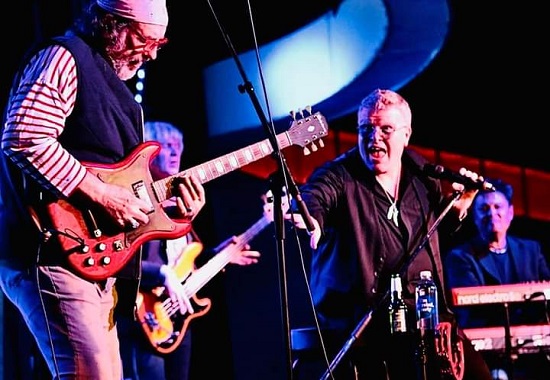
I have previous to declare here. Back in early October 1976, at the University Of Dundee, (who were remarkably well disposed, thank the Lord, to taking in English duffers who’d not exactly exceeded expectations in their A-levels) the band booked for freshers week, just before I started my three-year stint as a resident DJ there, was Frankie Miller’s Full House.
And what a ‘Welcome to Scotland’ that was. My mate the celebrated rock snapper Allan McKay and I had one of those moments where we both knew that was it, whatever happens, we’re doing rock ‘n’ roll in some shape or form for the rest of our lives. It was like facing a full-on storm force wind – and it was the first time I’d been to a gig where a band had successfully welded Rock to Soul to the Blues with some damn strong pop tunes as well. To this day on Radio Caroline I use the personal strapline ‘Rock n Soul Radio’; get these two to meet on a stage somewhere, stir in a pinch of the blues and you’ve cracked it.
And to my absolute delight – and Butlins true intent is all for your delight, (it says so, it always did!) they absolutely nailed it. What a line up band leader and guitarist Ray Minhinnett has assembled here! They say the best musicians attract the best musicians and there’s not a duffer or time-server amongst this lot. From the opening bars of ‘Be Good To Yourself’ through an impassioned ‘Fool In Love’ right though to the final tongue in cheek disdain for the singalonga ‘Darlin’ at the end, (Miller hated the song, which he knew he was going to be stuck with forever once it became a massive top ten single hit, even when he returned to play our venue in ’78, and so do the rest of the band even now, but at least they had the honesty not to short change the punters who wanted to hear it and played it straightish) it was like standing in the eye of the storm again, only 47 years removed. Magic.
For most people in situations such as these, the elephant in the room would be that Frankie Miller was such a unique talent. Which was part of the problem, the record company just didn’t seem to know what to do with him. Nobody, and that’s nobody, could lay a glove on him in his pomp so the guy on the mic is on a hiding to nothing, right? So I was nothing less than astonished to hear the man tasked with bringing the vocal delivery of these songs to life wasn’t just joining up the dots…he was absolutely giving this the best shot you could reasonably expect another human being to give. What a voice has yer man Gregor! Go See wherever and whenever. They had to play a shorter set than normal and I’ve got to catch them out on the road somewhere else now. Truly the Celtic Soul Vision. If you go around not going to see these you might just as well give your ears away.
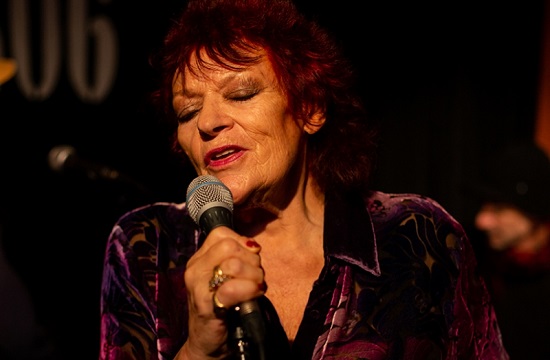
And I’d have been happy to go home at that point but…..Dana Gillespie and her band finished the proceeding late on Saturday night in the smallest of the four venues; but with mobile phones etc good news travels fast and by the time she was three songs in they were hanging off the rafters. For the uninitiated, Dana Gillespie was signed to Bowie’s MainMan management group and sang backing vocals on Bowie’s Ziggy Stardust album before releasing the album ‘Weren’t Born A Man’ on RCA records in 1973 which was produced by Bowie and his guitarist Mick Ronson. Since then she’s been largely concentrating on singing and recording the blues alongside her acting work and is a well known and respected member of the Blues fraternity. But all this just falls away when she lets rip with that band of hers, including the astonishing keyboard thumper Dino Baptiste who is just boogie on legs. Her main area of concern in the songs she performs are those highlighting the strange balance between the attraction and the fractiousness which exists between men and women – exclusively from a female perspective and we’re treated to a set of ripe old blues songs which made the walls blush, starting at Bessie Smith and working downwards. Imagine a more glamorous Jo Brand with A Voice belting out the blues in front of a band who are absolutely on fire and you get the gist. When I say the housewives’ favourite, Jimmy Young, had to be quite forcibly dissuaded from playing her version of ‘Ten Inch’ on Radio One back in the day, you probably get the idea. Time – she’s into her 70s now but you wouldn’t know it for the energy and ‘twinkle’ in the performance – has blessed her with a mellowed, husky set of pipes which just so suit the task in hand. Always good to see a ‘survivor’ thriving, but this was much, much more – an object lesson in how to work a room. This isn’t a relic of the wild times relishing last woman standing status; this is overdue recognition of an outstanding talent. That David Bowie, he knew what he was about.
Sunday afternoon and the Chicago Blues Legends Show is on in Reds which is by far and away the best of the ‘big’ venues. The sound in Centre Stage is usually horrible and woolly and the big tent is, well, a big tent. But Reds is crisp, precise and usually a very good listen and so it was on the Sunday afternoon in question. Giles Robson and the aforementioned Dino Baptiste did a sterling job opening for them and on came the first of the Legends, a hand-picked hot Chicago player already doing great things and destined for greater. Jamiah Rogers was the unanimous choice of the old stagers who were due to follow him on the package and it was a brave move as this guy is HOT. We’ve all heard ‘Baby Please Don’t Go’; not like this, you haven’t. And, like all really talented American entertainers, he knows how to grab an audience without seeming to make the effort and in the tradition of the Blues, it tends to be BS-free as well. If you’re rising to the top of a scene as competitive as the Chicago blues scene – at the age of 27 – well…no disrespect but those old lads better be At It, that’s all I’m saying.
Twice Grammy-nominated, John Primer was part of Willie Dixon’s Chicago All-Stars and led Muddy Waters Band from 1981 onwards. A small figure hunched behind a big red Gibson (I think, I was a long way back. Sunday afternoon, I like a nice sit down then) and promptly brought the fields, the city and the Hard Times right to my table.
I don’t know how they do that. How can a musician bring you that Shakespeare’s catharsis thing right to your table when you’re gently sipping a pint of Guinness and are comfortably at your leisure? And there you are, head down and nodding quietly to yourself while the man plays turbocharged Jeremy Kylesque stories of poverty and misery and extreme deprivation and there you go. You Got The Blues. First Time all weekend I genuinely Got ‘Em. And then on comes Billy Branch. He’s recorded and / or toured with Willie Dixon, Johnny Winter, Lou Rawls, Taj Mahal……and he plays the old gob iron like the living spit of Little Walter. And he played ‘My Babe’ and it was 1955, it was Chicago, and it was January, and cold. And then they all joined together and hollered and stomped and wailed.
And when I stepped outside after that because my head was full it was January, and cold.
And the fourth of my three top choices for the weekend – King Pleasure and The Biscuit Boys. Now you couldn’t get further away on the blues spectrum then these. We felt, myself and the legendary Mrs Jenner, that a bit of a knees-up would be a suitable way to round off proceedings for the weekend and this lot did not disappoint and they’re no mugs either, having been in with BB King amongst others. A sort of turbo swing, Jumping Jive / Big Jay McNeely / Cab Calloway / Louis Jordan mash-up meets Bill Haley and the Comets, Madness and Lord Rockingham’s Eleven with Eric Morecombe on slap bass. The lead singer chose the purtiest girl in the room to dance with when he went walkabout and so I graciously donated the Legendary Mrs J to the cause, as if I had a choice in the matter and we went to our very clean and comfy billet, I have to say, back to tea and toast and the back end of Match of the Day, utterly convinced of the stupidity of the decision, whatever the politics to make this the last Rock n Blues Festy weekender.
Outright winner? For me, Full House on points. But then again I got reasons!
Bob Bradshaw’s a bit of a regular around these parts. We’ve reviewed four of his albums and this is his third contribution to our High Fives feature. His songs are exceptional and original and his albums are examples of sequencing a series of songs to create a coherent entity, particularly on his 2019 album “Queen of the West”.
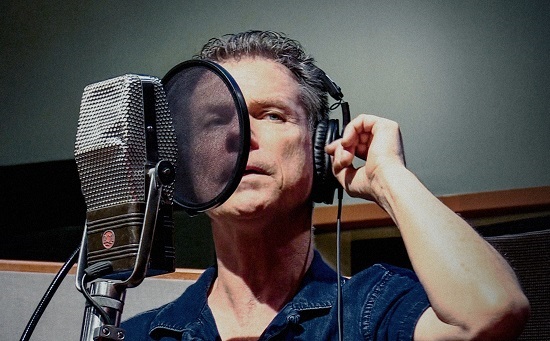
Podcasts were a life-saver for me over the past year and a half, especially music podcasts. Here’s my high five, with examples (sometimes drawn from previous years but I heard them for the first time in 2021).
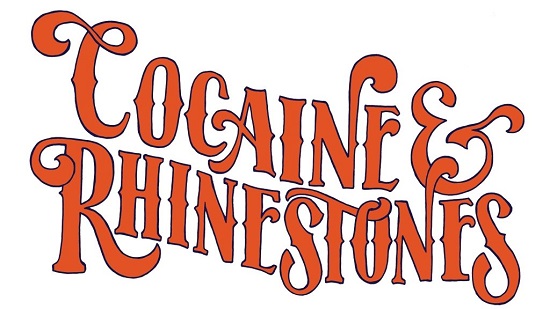
Cocaine and Rhinestones.
Tyler Mahon Coe’s wildly opinionated, rip-roaring podcast about the history of Country music is a trip. His use of sometimes obscure song clips to illustrate points is masterly. He’s devoting the whole of the present season to George Jones. This episode from the first season about Buck Owens and Don Rich is terrific:
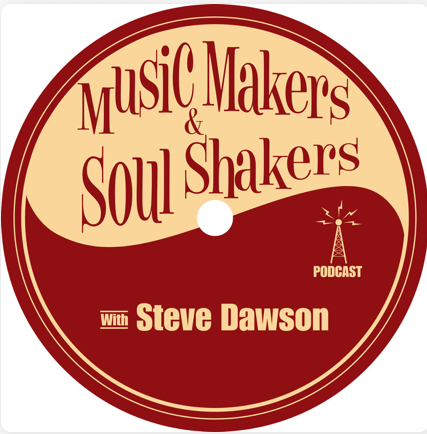
Music Makers and Soul Shakers.
Steve Dawson is a fine guitar player/producer himself and this is one of the best nuts-and-bolts podcasts for and about musicians I’ve heard. There’s some great stories in this episode with Marc Ribot:
https://www.makersandshakerspodcast.com/podcast/8-marc-ribot
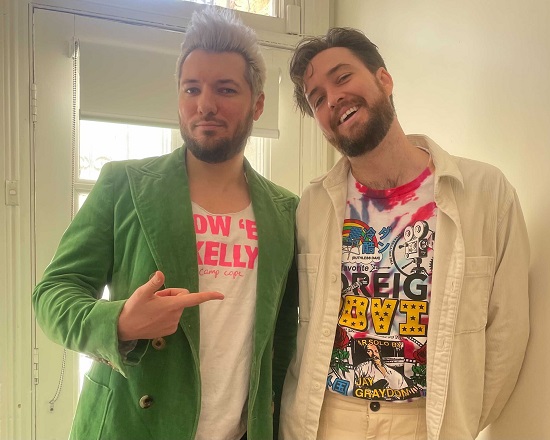
My Favorite Album.
Host Jeremy Dylan has interviewed Daniel Lanois, Mitchell Froom, and Max Weinberg, among others. In this episode the great Nick Lowe explains how he puts a live show together:
https://myfavoritealbum.libsyn.com/338-nick-lowe-breaks-down-his-live-show
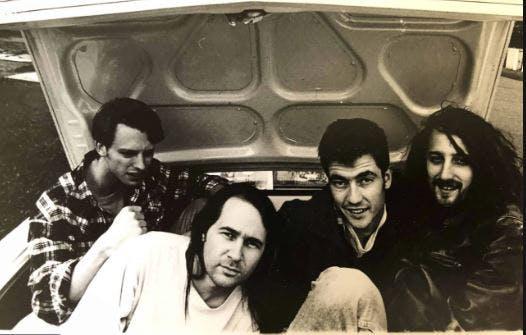
Love That Album.
Maurice Bursztynski’s wide-ranging, low-key approach is perfect for discovering new music, or revisiting old favorites. Steve Berlin, from Los Lobos, talking about their 2021 album ‘Native Sons’ is a good place to start:
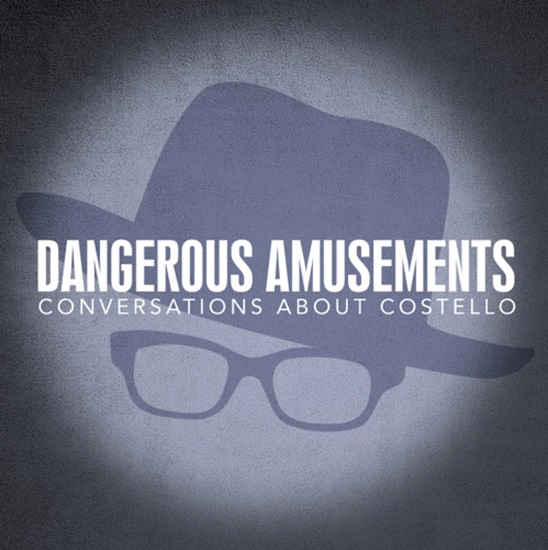
Dangerous Amusements: The Elvis Costello Playlist. Perhaps only Dylan or Bowie are worthy of this level of scrutiny (and there are podcasts about both that I don’t think much of.) Fellow musicians, journalists and music business folk discuss (with host Stu Arrowsmith) what Costello has meant to them over the years, and pick one song from each of the five decades Costello has been producing his idiosyncratic catalogue. There’s plenty good stuff in this interview with Glen Colson who did publicity and promotion for Costello in the early years:
https://podcasts.apple.com/il/podcast/glen-colson/id1535324499?i=1000527944399&l=iw
It’s looking like this feature might have legs. After a moving contribution from Danny Schmidt, Neil Sheasby from Stone Foundation was next to send a contribution over in our direction with his usual incredibly quick turnaround. We were expecting something special here, because Neil has seen a lot of gigs (and also played a lot), so this was always going to be something a bit special, and it also has the best closing line ever. So let’s hear about Prince’s “Lovesexy” tour at Wembley Arena.
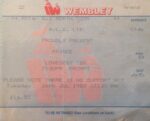 Tuesday 26th July 1988, Wembley Arena –
Tuesday 26th July 1988, Wembley Arena –
I still find it hard to comprehend that Prince is referred to in the past tense, another true original innovator lost. It’s like a curtain closing forever, a nail through the pulse of musical history. Prince & Bowie both passed in the space of only a few months…the likes of which we will never witness again, their gift was unique & unrepeatable. Thankfully it unfolded in our lifetime. Our very own Mozarts I suppose.
I get asked a lot about the best gig I’ve ever seen, a common topic amongst the social narrative especially after a few looseners in the pub. Now, I’ve been to my fair share, seen most of the bands & artists that I’ve wanted to, some on several occasions. I’ve been very lucky in that respect, I’ve had countless “right place/right time” moments. Probably never more so than watching Prince turn the cavernous Wembley Arena into what felt like an intimate dancehall on his “Lovesexy” tour of 1988.
I was fortunate enough to see Prince tons of times, he was never anything less than mesmerising (ok, “Batman” tour was a bit shit but still there were THOSE moments). His arrival back in the UK in ‘88 was eagerly anticipated as he’d cancelled the previous year’s dates for the “Sign O’ the Times” tour. I was so disappointed I didn’t even muster up the momentum to return my ticket for a refund. I decided to keep it as a souvenir of a non-event and make do with watching the film of the gig a hundred times over (“please wear something Peach or Black” was the instruction on the stub)
I managed to blag freebies for the Wembley gig via my record shop connections and myself & Hammy found ourselves nestled next to Pop royalty for the night – well, Bananarama sat behind us, the singer from The Adventures to the left and directly to my right hand side Lloyd Cole was seated, studious in spectacles, scribbling notes into an A5 writing pad all evening (I did enquire at one point if we should expect Commotions dance routines on his next tour but he just grunted and ploughed his head back into his jotter)
Even Prince’s presentation and re-arrangement of the building was unique for the time, I think he was the first artist I saw set up in the centre of the venue and perform on a 360 degree circular stage, both Stevie Wonder & Anita Baker gigs followed suit very soon after, it made for the perfect spectacle. The “Lovesexy” tour not only featured the irrepressible Cat (remember her?), the stage in the round also came complete with a Ford Thunderbird automobile, multi-level trellis staging, a fountain and a basketball court!
Despite selling out every night it’s reported that the huge production costs resulted in the tour making zero profit…did he care?
It was pop/funk/rock genius all rolled up into one of the most explosive performances I’ve ever watched. Master showmanship channelling prime time James Brown, Little Richard, George Clinton…musicianship that would leave most others standing (he’s easily the best guitarist I’ve ever heard) and of course…those songs. Let’s not overlook that marvellous run of recorded output and that of course is only what we have heard, thousands of recordings from that period remain in the vaults, unreleased. No one could keep up with him. The 80’s were defined by his soundtrack as a backdrop.
Find me a more complete piece of work than the sprawling epic that was “Sign O’ the Times”? Virtually faultless. “Parade”, “Around the world in a Day”, “Lovesexy”… just ridiculously amazing records. I used to study those albums, I think I played Prince at some point each & every day for at least 5 years. I carried a cassette of “Sign O’ the Times” album in my pocket everywhere I went for almost a year. “Purple Rain” was probably a red herring, he had so much more…could turn his funk & flavour in any direction and make it seem effortless and after a global success he wasn’t afraid to do a musical U-turn and take risks.
Ever the entertainer, he still didn’t play or pander to the gallery. He made his own rules, determined not to be typecast.
That night in July 1988 he was unstoppable, in his absolute prime. The show was relentless, it reached unthinkable, extravagant heights, unachievable by any else’s standards. I vividly recall one moment clear as crystal……..
Prince was off on a guitar workout, in itself a bona fide shock of electricity; he could play, really play…in an instant his solo peaks to dizzying heights, he throws the guitar around his back, struts off in 5″ high heels down a stage ramp somehow managing to drop to the floor doing the splits in full flow whilst still hurtling towards his microphone, he arrives at the edge of stage, spins round in a pirouette, boots his mic stand away from him, drops for one more session of the splits then leaps back up to catch his microphone in perfect time to start singing the next verse…all of the time the guitar stays intact…it was undoubtedly the coolest 60 seconds of my gig-going experiences; even Lloyd Cole put his pen down.
When panic sets in during the last week in November at Riot Towers as we realise that High Fives has crept up unnoticed once again, the first person we contact is Neil Sheasby, bass player and co-songwriter with the brilliant Stone Foundation. He’s always happy to contribute, he’s passionate about music (his own and other people’s) and he’s a bloody good bloke. And his contributions are always worth reading and following up, so here’s the 2017 line-up. And, by the way , Neil, congratulations on a brilliant year.
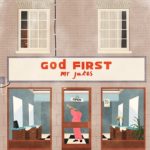 1 – Mr Jukes “God First”
1 – Mr Jukes “God First”
I don’t think I could have imagined in my wildest dreams that an album created by the guy from Bombay Bicycle Club would have ended up being my favourite and most played record of the year.
I’m always wary of side projects too (see Tin Machine) but this really is a complete piece of work from beginning to end. It actually got better and better the more I played it.
I caught them on their tour too at Shepherd’s Bush Empire and they were fantastic live too, a real modern soul vibe.
 2- Teenage Cancer Trust gig Royal Albert Hall
2- Teenage Cancer Trust gig Royal Albert Hall
We we’re fortunate enough to find ourselves performing on some prestigious platforms this year, none more so than the Royal Albert Hall back at the start of March.
It really felt like a turning point for us, there we were rubbing shoulders with the likes of Roger Daltrey, Ronnie Wood, Paul Weller, Kelly Jones etc…..and it just seemed a natural step up, we didn’t get over awed by the occasion or even nervous, it just felt like an opportunity that we were fully prepared for. It was a real thrill to play in such a setting, the gig itself was organised by and in aid of Teenage Cancer Trust, prior to our slot just after we’d soundchecked we were invited to attend a music workshop where teenagers whose daily lives are affected directly by the threat of Cancer were gathering in a hall creating and producing a joyous sound, it reminded me that even in the face of such adversity and testing moments that music and that outlet of creativity is such a positive force. Young kids whose everyday lives are compromised by the risk of cancer united in a celebration of sound.
I found it incredibly inspiring and moving. Certainly one of the most memorable performances I witnessed all year.
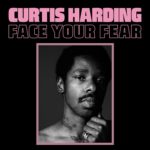 3- Curtis Harding “Face your Fear”
3- Curtis Harding “Face your Fear”
Second album from Curtis Harding and since it came into my orbit I’ve played it endlessly. Once again I think it’s a very complete piece, the songs and sound of the record really hang together well. It’s not really a straight ahead Soul album, it reminds me slightly of Terence Trent D’arby at his creative peak although it’s probably unfair of me to draw comparisons as this is very much it’s own thing.
Real strong collection of tunes that sound kind of timeless.
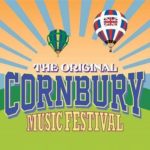 4- Festival Fever.
4- Festival Fever.
One of the main reasons I enjoy playing at festivals is that it affords the chance to catch other artists.
Two real highlights of my summer were Cornbury festival in Oxfordshire, which was a rather upmarket affair (they even had a Waitrose on site!), there was a real good vibe around the whole place, I had preconceptions of it being a bunch of toffs sipping spritzers just there for the ticket and jolly up but it was quite the opposite, you could tell people were really into the music, it was definitely our best gig of the festival circuit.
I enjoyed it so much that I went back the next day where I caught The Pretenders who just tore through a greatest hits set, I’d kind of forgotten how fantastic they were/are….
Seeing Solange at Glastonbury was fairly mega too.
 5- David Bowie book / A Life by Dylan Jones
5- David Bowie book / A Life by Dylan Jones
My son bought me it for my birthday back in October, for some reason I thought I was going to hate it, not sure why because obviously I love the subject matter and I quite like Dylan Jones as a journalist, maybe I was thinking it would be a bit kiss and tell, gossipy kind of affair but it turned out to be one of the most fascinating, revealing documents that I’ve read on Bowie.
It’s drawn from hundreds of interviews with close associates, friends, lovers, rivals, musicians….
It gets close to the core of the real Bowie.
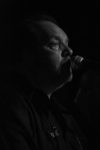 There was a time in the mid-eighties when the north-west of England, and Liverpool in particular, dominated the music scene. The Crucial Three, Pete Wylie, Ian McCulloch and Julian Cope, were at the top of the pile, bursting with creativity, vision and sheer audacity and never short of an outrageous quote for the press. Fast forward thirty years and Ian McCulloch’s in semi-retirement, Julian Cope’s a scholar and novelist, and Pete Wylie’s still doing what he does best; as the t-shirt says ‘Part-time rock star, full-time legend’. Which is why I was wedged in to a heaving crowd at The Water Rats in Kings Cross, watching him prove it, with the current incarnation of The Mighty Wah. He’s still got it.
There was a time in the mid-eighties when the north-west of England, and Liverpool in particular, dominated the music scene. The Crucial Three, Pete Wylie, Ian McCulloch and Julian Cope, were at the top of the pile, bursting with creativity, vision and sheer audacity and never short of an outrageous quote for the press. Fast forward thirty years and Ian McCulloch’s in semi-retirement, Julian Cope’s a scholar and novelist, and Pete Wylie’s still doing what he does best; as the t-shirt says ‘Part-time rock star, full-time legend’. Which is why I was wedged in to a heaving crowd at The Water Rats in Kings Cross, watching him prove it, with the current incarnation of The Mighty Wah. He’s still got it.
The room was packed with fans from the eighties, London-based Scousers and even Liverpool-based Scousers, so he didn’t really have to warm them up. As soon as the stage lights went up, it went, well, chicken oriental, as they say in these parts. Pete Wylie’s gained something that you wouldn’t have expected from his eighties pronouncements; he’s learned to have a bit of a chuckle at his own expense. The chats with the audience between songs are sometimes funny, sometimes political (Thatcher and Trump) and sometimes fond reminiscence (Pete Burns and Wylie’s good friend Josie Jones, who was commemorated with the criminally under-rated “4 11 44”). There was plenty of nostalgia, but some powerful new material as well.
When the band kicked into “Come Back” as the second song in the set, it was an acknowledgement that Pete Wylie has anthems to spare, he didn’t need to save this classic for the end of the set. The rest of the set included “Heart as Big as Liverpool”, “Seven Minutes to Midnight” (record of the week in four music papers), “Story of the Blues” and a version of “Sinful” which morphed into “Heroes” as a Bowie tribute. Just when the audience thought he’d run out of anthems, for the encore the band blazed through “I Still Believe”, a new song from the album that’s as good as anything he’s ever written. The album’s called “Pete Sounds”; now that’s what I meant by audacity.
For ninety minutes, a little corner of Kings Cross turned into mid-eighties Liverpool. Trust the t-shirt; Pete Wylie is an absolute full-time legend.
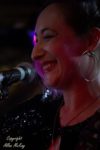 As far as interviews go, I think I’ve been really lucky. In six years, I’ve never had that experience of the uncooperative, bored, jet-lagged or just plain hostile interviewee. I’ve had to work in cupboards stage-side while rock bands soundchecked, but everyone I’ve met has been interesting and charming. I’m pleased to say that Rachael Sage (singer, songwriter, guitarist, pianist, artist and designer) extended my winning streak when I met up with her before her performance at the Discovery showcase at 229 on Great Portland Street to talk about her new album “Choreographic” and her current UK tour (among other things). I even added a new Yiddish word to my vocabulary. Here’s how it went:
As far as interviews go, I think I’ve been really lucky. In six years, I’ve never had that experience of the uncooperative, bored, jet-lagged or just plain hostile interviewee. I’ve had to work in cupboards stage-side while rock bands soundchecked, but everyone I’ve met has been interesting and charming. I’m pleased to say that Rachael Sage (singer, songwriter, guitarist, pianist, artist and designer) extended my winning streak when I met up with her before her performance at the Discovery showcase at 229 on Great Portland Street to talk about her new album “Choreographic” and her current UK tour (among other things). I even added a new Yiddish word to my vocabulary. Here’s how it went:
Allan – Hi Rachael.
Rachael – Hello.
Allan – How’s the tour going so far?
Rachael – The tour’s been really great. This tour’s a little bit different because, in addition to the club shows at night, we’re also doing workshops in the daytime along the tour route at various schools, either performing arts schools or the dance and drama departments of general schools along the way and it’s been fascinating. I’ve never really done that before; I’m not a teacher, I’m kind of inexperienced at that, but I seem to have a special relationship with kids between nine and fourteen so we’ve been enjoying and learning a lot.
Allan – And presumably that means that you’re performing at unusual times.
Rachael – Indeed it does. We’ve had some crazy call-times to meet at the tour van in the morning, like seven-thirty in the morning to drive a couple of hours to perform at 10 a.m. Actually, this morning we played at 9:30. But on the upside, our jet-lag is so confused that it’s non-existent; we don’t know what time zone we’re in. When we go home to New York, it’ll probably be easier to re-acclimate.
Allan – When you come to the UK, do you find the audiences very different from American audiences?
Rachael – I suppose it would be more politically correct to say no, that audiences everywhere and every environment around the world are just about the same, because people are people and we have deduced that people around the world love music the same amount and they all want the same things out of life and there is that unifying theme that we experience. But in terms of audience reactions we’ve found UK audiences and European audiences in general to be a lot more open and expressive when they really, really like something and it’s not necessarily loud whistling or heckling. They’ll come up to you after shows and have that familiarity and treat you like you’re their buddy they’ve known forever and talk to you about their own lives and themselves; it’s just an openness and we love that, that’s part of why we keep coming back.
Allan – I’ve spoken to American artists who think when they start the set that they’re dying on stage and suddenly at the end of the song, the audience erupts.
Rachael – I’ve experienced that to an extreme in Japan, where you think you’re not going over at all; they must hate it, and afterwards there’s the most gentle clapping and they come up to the merch table and they want to buy all your CDs when you weren’t even certain they were into it. People have their own way of processing music and there really is no wrong. As long as nobody throws tomatoes, we’re happy.
Allan – I understand there’s an interesting event you’re involved in at the end of the tour as well at the Royal Albert Hall.
Rachael – The Dance Prom? That’s an event where we’re running a contest and the school that performs the winning routine to one of my songs will receive a scholarship from my record label Mpress Records and myself. I’m not performing at the event, but it’s very much tied in to the “Choreographic” dance theme of this tour. We’re going to be back in London at the O2 Academy in Islington on October 28th, and The Bedford on November 1st. Looking forward to that.
Allan – For the benefit of the MusicRiot audience, tell me a bit about your background, because it’s been very varied, hasn’t it?
Rachael – It has, and yet everything has had the thread of music really. I started playing piano by ear when I was about two and a half/three years old which the exact same time I was thrust into a pre-ballet where really all you’re doing is running around and spinning around and having fun, somewhere for you to be busy while your Mom gets a break, but it quickly bloomed into a full-blown young ballet career and I ended up becoming quite serious as a ballet dancer and at the same time very serious about being a songwriter. I learned to play by ear pretty much exclusively from sounding out all the music I heard every day in dance class. So I would go home and play all these classical pieces and I have no knowledge of the composers or what they were called because it was an informal education, but it was a very thorough education and I think my sense of melody and dynamics really stemmed from classical music.
Jumping ahead, I kept the songwriting up and I pretty much knew, I wanted to be a professional singer/songwriter and composer well before high school, maybe at thirteen/fourteen. Then for my Bat Mitzvah, my relatives got together and bought me a four-track tape recorder. Once I mastered that, I fancied myself as a budding producer, bouncing vocal tracks and having a good time with that, and by the time I went to college, I was very firm that I wanted to be a recording artist and tour the world doing pretty much what I’m doing now, so I guess I was a planner.
Allan – I’ve spoken to artists who agonise about the genre they’re working in and the way it affects sales of their work…
Rachael – There’s an expression in Yiddish that I have to respond to that; it’s spelt F-E-H. Genre’s a useful tool to help maybe turn people on to your music to be able to describe it in an elevator pitch, as they say. Actually, yesterday another writer asked me ‘How would you describe your music in three words?’, and I said colourful chamber pop. The reason I said that was first of all, I’m in England and I feel like you have a unique appreciation of pop music and also that pop music is a broader genre here. If you say pop in America, people assume you mean Katy Perry and here it could mean The Beatles or Elvis Costello, you know, pop/rock, so it’s broad enough to feel like I’m at home in that category.
Allan – With “Choreographic”, you’ve pretty much invented your own genre, haven’t you?
Rachael – Oh my goodness, thank you. I didn’t invent the word, unfortunately. I guess what I did, what’s interesting is that my music was being used and embraced by the lyrical dance community in America and also over here well before I was aware of it and then a few of my diehard supporters started sending me YouTube links where I would see these full-blown dances to my songs in competitions and winning awards and I didn’t really know about that competitive dance culture because the in dance culture that I grew up with, there were no contests; it was strict ballet and that wouldn’t have been allowed, but it was fascinating to see these young, very prodigious, hard-working kids performing and interpreting the music in a way that that was completely different from how I might have envisioned it and sort of humbling. At the end of the day, you create it and the minute it comes out of you, it’s really not yours anymore; it’s collective ownership and I love that. Eventually when the show ‘Dance Moms’ started using the music, it brought me back to that time in my youth when dance was a huge part of my life and it defined who I was as a person and I hadn’t really thought about that time for a long time. When you’re a former ballerina, you kind of put it behind you because there’s some bitter-sweetness; it was painful and very gratifying, like breaking up with an ex-boyfriend or girlfriend. You move on and you let it go, but this was a good time to revisit it and come at it musically from a more positive angle, I would say.
Allan – With “Choreographic”, there must be certain elements that make it work for that kind of interpretation.
Rachael – Yes, what happened originally was that they were using all these different songs from various albums of mine and of course there were different types of songs on those albums, but the ones they were using were usually very pianistic and very arpeggiated. I guess the average person might say there were hints of classical technique in the piano playing, and then also a lot of stringed instruments, cellos and violins, so I picked up on that. More than anything when I sat down to make this album, I tried to come at it more from a visual perspective of what I thought would work in a multi-media context with dance and music and I could only go by what my imagination was offering. I have done some choreography in my day, it’s not my forte, but I’m such an avid fan of dance and choreography in general that I have a pretty good sense of dynamics and what might be danceable, so that’s really where I was coming from. I also had the visual in my head of perhaps, one day, bringing one dancer or several dancers on tour with me and doing more of a show that’s theatrical as well as pop and that’s still in the works. We’re thinking about mounting something along those lines in New York in January.
Allan – Presumably, as well as the musical side, it has to have a fairly strong narrative as well. Your songs tell stories.
Rachael – Well, the genre of dance which has embraced my music most has indeed been lyrical dance, which is this term I had no familiarity with and I see these young girls, sometimes boys, but not as often, interpreting the music, usually very literally. I have a song called “Barbed Wire”, which was performed on ‘Dance Moms’ and the song itself is about someone in your life who can’t make up their mind and they’re very ambivalent, and how frustrating that is for you when you are certain how you feel. I think adults or maybe contemporary professional dancers might have interpreted it with more of an abstract approach, where you felt the emotion but it wasn’t quite so literal and of course the ten/eleven/twelve year olds literally had a backdrop of a barbed wire fence and were climbing it and interacting with it, and that was so interesting because it hints at the idea of doing a live show where the average person sometimes does need those very accessible touch zones to identify with a new art form.
Allan – Is it true that you actually wrote the album here in London as well?
Rachael – I did, yes. I wrote it in Camden. I had two festivals pretty far apart for me. I like to fill every single day, because I’m a busy OCD kind of an artist and I don’t like days off; they make me nervous. We were coming up on those shows and we had choice between trying to pick up some radio in between or just leave that gap and I said ‘You know what, it’s time for me to write a record.’ I’ve never quite set that deadline for myself before. I usually just let it happen organically; over the course of a year, I write twelve songs and then I have an album and then I’m ready to go record, but I had recently reunited socially with my co-producer from many, many years ago, Andy Zulla, who did my first few records with me, and we hit it off again so beautifully and we got all excited to collaborate again. He said to me ‘When you come back from England, if you have a batch of tunes ready, I can record with you in August and then I’ll be busy again after that, but keep me posted.’ That was a driver as well; I wanted to come back armed, like a fashion designer would feel: ‘I want that fall line all ready to go’. I had five days in Camden, so I holed myself up in a hotel, ditched the car and the tour van and stayed at a Holiday Inn Express. I’d go walking every day and just take in the energy of the city and then I wouldn’t let myself go to sleep unless I’d written at least one song. So that’s the story of how this record was written. It was during Glastonbury Festival too so that was what I watched if anything on the television and it kind of inspired me as well.
Allan – Apart from music and dancing, you have other artistic interests as well, haven’t you?
Rachael – I do, and that’s also why I was drawn to the word choreographic, because I’m a visual artist and I’m a graphic designer, but it evolved more out of necessity than anything else because I run my own record label and when you do that you have to wear a lot of hats, so there have been times when I felt I would just do better designing my own artwork because I had a specific vision. I just figured it all out and so there’s that graphic, visual aspect to my work and there are many artists I admire who have that as well like David Bowie, Kate Bush and David Byrne, so many artists, even John Mellencamp, Tony Bennett, who I admire and I’ve become very interested in their artwork as well and that helps me to have a window into another side of them. I hope that people explore that aspect of my work as well and I have a section on my website, ’Visuals’, where you can see my paintings and collage, and just recently I developed some wearable art; I’ve been painting on jackets and dresses and things like that and it’s just another fun outlet for me creatively.
Allan – I’m always fascinated that most of the very gifted musicians I know have various other artistic interests, like photography, as well…
Rachael – Probably keeps them sane…
Allan – One last question, is there any particular song that always make you cry?
Rachael – My favourite contemporary folk artist is Glen Hansard. I was recently at his concert at Carnegie Hall and I was weeping like a little baby. It’s on his new record. He composed the music for the movie “Once”, which was such an incredible music film and the song’s called “My Little Ruin”. He’s an Irish songwriter who was with The Frames with and there was a Broadway show created from “Once”, which won the Oscar for best song and it ran in the UK and Ireland as well. He’s in the vein of Damien Rice, that kind of vibe, beautiful string section, acoustic guitar and I’m a big Irish music fan. Anything Irish makes me cry.
Allan – Many, many thanks Rachael.
Rachael’s album “Choreographic” is released in the UK on November 11 on MPress Records. You can also see photos from Rachael’s performance at 229 here.
 Another Saturday, another venue to tick off the list. The Unicorn on Camden Road seems incongruous in this area; you think it should maybe be a mile down the road with all the vibey places in Camden Town. But maybe it works because of the distance. Anyway, the reason for this excursion from the well-travelled path is to check out a pub that’s daring to put on live music six nights a week; tonight’s offering was the “Somewhat Damaged” night offering four very different live sets. It wasn’t packed to the rafters, but it was reasonably busy, with an enthusiastic audience.
Another Saturday, another venue to tick off the list. The Unicorn on Camden Road seems incongruous in this area; you think it should maybe be a mile down the road with all the vibey places in Camden Town. But maybe it works because of the distance. Anyway, the reason for this excursion from the well-travelled path is to check out a pub that’s daring to put on live music six nights a week; tonight’s offering was the “Somewhat Damaged” night offering four very different live sets. It wasn’t packed to the rafters, but it was reasonably busy, with an enthusiastic audience.
So, first up was a solo set from Adam Lightspeed playing acoustic versions of some new songs and some from his band Starscream’s debut album. It was a valiant attempt, but the album versions lean heavily on big productions and the songs weren’t the same in the stripped-down format. Full marks for effort; it can be a lonely place on stage solo when the room’s nowhere near full. The album “Sexploitation” is definitely worth a listen though.
Next up, Loose Joints were from the badlands of south-east Essex, mashing up funky rhythms with riff-driven rockers and generally getting the audience off their seats on their feet. They even threw in their own take on the James Bond theme. Great tunes, inventive arrangements and loads of fun. I’m sure I’ll be seeing Loose Joints again.
So, what about Sister Witch? The songs are the work of David Ryder Prangley and Lux Lyall, guitarist and singer respectively and they were joined on stage by Belle Star and Anna Christina (drums and bass) from Lilygun and another two guitarists to create a very seventies-style line-up; three guitars, indeed. There’s more than a nod to seventies iconography as well, with DRP’s low-slung guitar and the routine of sharing Lux’s vocal mic à la Bowie and Ronson. And the glam references don’t stop there, some of the riffs could be T Rex at their noisiest and they’re interspersed some classic Stones-style interwoven guitars. And that’s before we get on to the studied ennui of Lux, sitting down to read a Zelda Fitzgerald biography mid-song. A bit theatrical maybe, but it’s all part of the show, and she really can sing, so it’s not just a distraction; it never harmed Bowie or the New York Dolls to introduce a bit of performance art. On a crowded stage there was always something interesting to watch; no way you’re going to ignore Sister Witch. Style yes: substance definitely.
As for Black Sixteen, well, not for me really. Two guitars, bass and drums knocking out muscular riffs and a singer who didn’t quite have the voice to compete. Maybe not helped by the minimal soundcheck, but they just weren’t doing it for me. Nice venue, but one little whinge on behalf of the photographers. Red stage lighting; just say no.
Have a look at some of the photos from the gig here and here.
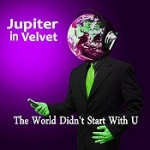 Once you get beyond all of the ‘man of mystery’ smoke and mirrors surrounding Jupiter in Velvet, the single “The World Didn’t Start with U” is actually pretty good. It’s a bit of a glam stomper that opens with programmed drums, a big, distorted guitar riff and a fairly simple guitar melody before leading in to a vocal with elements of Bowie, Bolan and maybe even Brett Anderson in the raucous chorus. It’s big and bold, and not too subtle, the hooks are effective and the voice has that suggestion of camp and androgyny that worked so well for the glamsters in the seventies (and nineties). The video combines a bit of mime performance with a suitably enigmatic storyline built around the viewer becoming part of the story. But here, have a look for yourself:
Once you get beyond all of the ‘man of mystery’ smoke and mirrors surrounding Jupiter in Velvet, the single “The World Didn’t Start with U” is actually pretty good. It’s a bit of a glam stomper that opens with programmed drums, a big, distorted guitar riff and a fairly simple guitar melody before leading in to a vocal with elements of Bowie, Bolan and maybe even Brett Anderson in the raucous chorus. It’s big and bold, and not too subtle, the hooks are effective and the voice has that suggestion of camp and androgyny that worked so well for the glamsters in the seventies (and nineties). The video combines a bit of mime performance with a suitably enigmatic storyline built around the viewer becoming part of the story. But here, have a look for yourself:
“The World Didn’t Start with U” is out on October 16th.
 Grace Jones’ 1981 “Nightclubbing” album had nine tracks and so does La Roux’s second album, five years in the making and named “Trouble in Paradise”. Besides the stingy number of songs – and don’t try looking for bonus tracks anywhere because you won’t find them – Grace Jones seems to have made a substantial impact on Brixton local Elly Jackson, aka La Roux. Apart from the image (androgynous female, indeterminate but presumed sexual orientation, bit scary), Jackson has quite dramatically amended her musical outlook since the Grammy-nominated, metallic synth-pop of her 2009 debut and opted instead for a sweltering and more organic and sensual soundscape a la Jones’ infamous Compass Point sessions. This shift in vision has not been without consequences and has subsequently resulted in the departure of La Roux’s partner in crime Ben Langmaid. If anything quality control has improved since their earlier and hugely successful collaborative work and any fears of Jackson faltering without her presumed contemporary are unfounded here.
Grace Jones’ 1981 “Nightclubbing” album had nine tracks and so does La Roux’s second album, five years in the making and named “Trouble in Paradise”. Besides the stingy number of songs – and don’t try looking for bonus tracks anywhere because you won’t find them – Grace Jones seems to have made a substantial impact on Brixton local Elly Jackson, aka La Roux. Apart from the image (androgynous female, indeterminate but presumed sexual orientation, bit scary), Jackson has quite dramatically amended her musical outlook since the Grammy-nominated, metallic synth-pop of her 2009 debut and opted instead for a sweltering and more organic and sensual soundscape a la Jones’ infamous Compass Point sessions. This shift in vision has not been without consequences and has subsequently resulted in the departure of La Roux’s partner in crime Ben Langmaid. If anything quality control has improved since their earlier and hugely successful collaborative work and any fears of Jackson faltering without her presumed contemporary are unfounded here.
“Uptight Downtown” is a pretty opaque chronicle on the Brixton riots, a song that may have sounded more topical if had been released when it was written some three years ago. Not exactly a social comment of any real substance, although you sense this wasn’t the point, it is a mid-tempo and juddering pop monster that acknowledges its musical heritage as well as moving straight through any on-trend sounds to form its own unique and modern sound. It fades in on a big bass beat before post-Chic Nile Rodgers guitars echo his production on David Bowie’s “Let Dance” and has a horn refrain which is similar to that of Grace Jones’ “I’m Not Perfect”, again a Rodgers production. “Tropical Chancer”, maybe the most fully realised moment here and the track that squarely apes Jones with a rhythm track that is the identical twin of “My Jamaican Guy”, it’s the stuff of summer anthems. There is tremendous delight to be had hearing Jackson lamenting the introduction of her tropical chancer via a dancer in that she doesn’t slip into an American accent as many would and is lyrically inventive and oddly British in its underwhelmed way of story-telling.
“Kiss and Not Tell” skips and clicks and sounds more than anything like the eighties pop-funk boy band Haircut One Hundred with its scratching guitar and staccato energy and boundless joy. It is one of the few instant pleasures here; it’s infectious and naggingly melodic and bowls over on first listen. Other tracks such as the, by turns urgent, and then spacey “Cruel Sexuality”, which will only generate further speculation surrounding the singer’s own sexuality, and the sharp, xylophone and horn-punctured, “Sexotheque” take a bit longer to love but when they hit, they hit hard. This trio of songs are all about sex but they are not at all explicit in their descriptions of lives which are led by carnal cravings; their sensuality is to be found elsewhere. All of these tracks are so lovingly and beautifully crafted and incorporate subtle musical and sonic detours sometimes lasting no more than ten seconds and never sounding like mass-produced, producer-dictated music which is a large part of its engaging and seductive nature.
“Silent Partner”, one of only three tracks here that would have also sounded at home on La Roux’s debut, is an attempt at an urgent, episodic dance track. The most uptempo song on “Trouble in Paradise”sounds instantly familiar in that it channels 1977 disco classic “Black is Black”, builds to an “I Feel Love” synth pile-up and, in the last minute or so, eventually turns into The Three Degrees hysterically phrased hit “Givin’ Up, Givin’ In”, another Moroder production. As thrilling as this may sound, it doesn’t quite come together in the way it should and La Roux does not introduce either enough vocal or melodic diversity or intensity to keep the full seven minutes completely interesting and on-track for its duration. A very good four minute song however, which, when stretched out, confirms that there are still some areas which Jackson needs to fully master.
“Let Me Down Gently”, another track which in its second half revisits that steely sound from the earlier La Roux signature, does a far more effective job at building tension and momentum and is the album’s real centrepiece – a mournful synth ballad that teases itself slowly with a real majesty. The other ballad “Paradise is You” alludes to the album’s tropical themes and is a hazy, romantic and piano stroked comedown. The sound is fully fleshed out by swirling synths and building harmonies and it’s only on the final track, “The Feeling”, which is the oldest and only weak song here, with its jarringly thin and hollow electronics and return to Jackson’s notably absent falsetto, that the magic comes to an abruptly premature end.
Current prevailing musical styles or trends including trap, EDM or r’n’b pop don’t get a look in here and La Roux’s musical cues end at around 1986 but never once does this result in parody or nostalgic navel-gazing . With not quite every track here being essential it only just misses out on classic status, unlike her heroine Jones’ seminal “Nightclubbing”, which from the get-go contained not one ounce of fat, there is some filler congesting the brief playing time of “Trouble in Paradise”. Possessed and determinedly individual, however, this is still one of the most delightfully uncynical and smart pop albums for some time. La Roux is proving that although she is clearly serious about the potential aims of modern music, she is also having tremendous fun making it – without a doubt the definitive summer release of 2014.
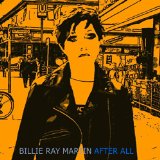 Billie Ray Martin has been very busy of late and finally the fruits of her musical labour are beginning to materialise. A forthcoming duet with Hercules and Love Affair resident Aerea Negrot and a new Jon Tiven-produced country and soul album are pencilled in for some time later this year as well as a re-release of her back catalogue including, perhaps, the mythical follow-up to 1990’s ‘Electribal Memories’. Preceding all of these though, is this intriguing and deeply satisfying cover version of an early seventies David Bowie album-track, “After All”.
Billie Ray Martin has been very busy of late and finally the fruits of her musical labour are beginning to materialise. A forthcoming duet with Hercules and Love Affair resident Aerea Negrot and a new Jon Tiven-produced country and soul album are pencilled in for some time later this year as well as a re-release of her back catalogue including, perhaps, the mythical follow-up to 1990’s ‘Electribal Memories’. Preceding all of these though, is this intriguing and deeply satisfying cover version of an early seventies David Bowie album-track, “After All”.
A quintessential Billie Ray Martin track in many ways, this new single does hark back to a sound that can be equated to Martin’s old band Electribe 101. A constantly evolving and innovative artist, it is unusual to hear the star reference her own sound in this way and that’s not to say that this is in any way a nostalgic or indulgent recording; it is in fact one of her most vibrant and possessed for some time. Haunting and lusty vocals that are very high in the mix and sound as though they are being whispered directly into your ear, pitched backing vocals that sound likes crazed infants (and true to Bowie’s original in that respect) all set to a throbbing bass-line that was first established in the late eighties. It’s a little freaky and you can dance to it, a perfect combination and Martin has never sounded better – a truly virtuoso performer.
With remixes by Miijk Van Dijk and Caesar Gergess (Van Dijk gets my vote with its hyperactive disco cowbell), there is something to please everyone here. However the original can’t be beaten and this is much more than just a stop gap between other releases. One of the best things I’ve heard this year, Billie Ray Martin continues to shine.
As a special treat, here’s a link to the video as well:
Enjoy.


